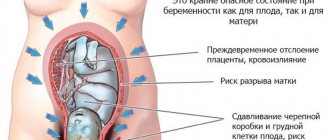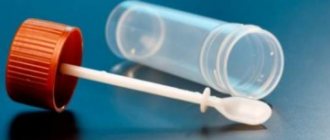Urea is one of the main products of protein synthesis in the human body. Urea (also known as uric acid) is formed from ammonia in the liver, and is processed and excreted through the kidneys, and since both of these processes occur continuously in the human body, the amount of this substance in the blood is usually stable. That is why, any deviations of this indicator from the standard demonstrate the presence of certain health problems. If urea in the blood is low, you should worry and consult a doctor.
Urea concept
Experts classify carbamide (urea) as a substance formed as a result of protein breakdown, and the structure of urea contains residual nitrogenous components. Urea is formed in the process of protein metabolism, which occurs in several rather complex stages of decomposition, transformations and transformations. At one stage, ammonia is formed, which itself is a dangerous toxin for the body. In the liver structures, it breaks down into several substances, one of which is urea. Normally, this urea is usually sent to the kidney, from where it is excreted along with urine. Therefore, the concentration of urine in the blood and urine is greatly influenced by the condition of the kidneys.
https://youtu.be/TmK8vTXVacU
Urea in the blood is low: causes of low levels in adults and children, symptoms and treatment
The manifestation of symptoms associated with disturbances in the functioning of human internal organs and, as a consequence, changes in the level of urea in the blood, are not always obvious, and often are not detected at all. Problems that affect the most important human organs, the liver and kidneys, can manifest themselves in various indications, but most often the following symptoms are indicated:
- disturbance of the patient's normal appetite;
- frequent bloating that occurs after eating;
- the occurrence of belching with obvious bitterness;
- the occurrence of heaviness and discomfort in the area of the right hypochondrium;
- rapid causeless weight loss of the patient;
- frequent manifestations of general fatigue, weakness, low muscle tone;
- a feeling of discomfort and heaviness in the area where the kidneys are located;
- manifestations of swelling of the limbs and other parts of the patient’s body;
- manifestations of chronic fatigue syndromes.
If a person observes some of the symptoms listed above, he should immediately consult his doctor and undergo the necessary tests to identify the true causes of the disease and promptly prescribe treatment. Painful symptoms affect the most important internal organs, and delaying treatment can be quite dangerous.
To determine the level of urea in the blood, you should contact a medical institution or a special laboratory that carries out tests to conduct a biochemical blood test. When taking tests, you should remember that you need to come to the laboratory in the morning and on an empty stomach. It is not recommended to eat fatty and fried foods on the eve of the test; you should avoid alcohol.
Joint swelling is a symptom
As a result of blood testing, the level of urea in the blood will be determined and, based on this information, the attending physician can establish the correct diagnosis and prescribe treatment, or refer the patient for additional research.
If the level of urea in the blood drops sharply, a person experiences the following symptoms:
- excess gas appears in the intestines, it swells and hurts;
- appetite worsens;
- bitter belching occurs;
- discomfort and heaviness in the projection of the liver (in the hypochondrium on the right);
- muscle weakness;
- weight loss;
- pain in the lumbar region;
- the distal areas of the legs and arms swell;
- asthenia, constant fatigue and inability to perform usual work.
If similar signs appear, you should start listening to yourself more carefully. Before a person sees a doctor, he should record suspicious symptoms in a notebook or, for example, in the memory of a mobile phone - it is always at hand.
The level of urea is determined by a biochemical blood test. At the same time, the creatinine concentration is determined to identify renal pathologies, and liver tests are also performed. The final diagnosis is made based on a combination of complaints, objective examination data, medical history and test results.
We suggest you read: Which is better: Anvifen or Phenibut? Anvifen or Phenibut or Pantogam
The value of urea indicators
Urea leaves the blood primarily through urine. In accordance with the rate of such excretion and the content of urea in the blood, experts assess how well the renal structures cope with the functions assigned to them. It is normal that protein is lost by the body through the intestines and kidney tissues. But only under one condition: balance must be maintained in the process of releasing protein compounds. If the urea level is normal, then this confirms the presence of balance.
The content and certain level of urea or carbamide in the blood indicates the following factors:
- How normally the kidneys function, perform urinary functions, remove toxins and other dangerous substances;
- How normally do muscle structures function, because they contain protein, the breakdown of which produces urea;
- How well does the liver work?
In other words, based on the level of urea in the blood, specialists can assess the condition and functionality of muscle tissue, kidneys and liver.
Why is urea formed?
As a result of protein breakdown, carbonic acid diamide appears, otherwise known as carbamide or urea. The substance is produced in the liver, and it is excreted by the kidneys. Urea production occurs non-stop, so there is an established norm, deviations from which indicate certain diseases.
Urea and uric acid are not the same thing. An acid is a product formed as a result of the breakdown of nucleic acids.
After the breakdown of proteins, the production of which occurs constantly, various substances are released.
A by-product of such a complex process is a rather dangerous substance - ammonia. It can negatively affect brain function. Therefore, there is a need to neutralize and remove ammonia as quickly as possible. The body's main filter neutralizes the substance, which is then transformed into urea. It, in turn, has increased penetrating ability, so it easily ends up in the bloodstream.
When the kidneys filter the blood, a lot of urea enters the primary urine, but about 70% is absorbed again in the tubules of the organ.
Generally speaking, urea is excreted:
- through the kidneys - approximately 90%;
- through the skin and gastrointestinal tract - only 10%.
Substance standards
Each age and condition has its own urea index, in addition, it can change in accordance with the reagents. Moreover, in the female body a much smaller amount of urea is considered normal than in male patients. To determine the concentration of urea, blood is taken from a vein in the elbow. However, before the study it is necessary to follow certain rules. For example, you should not eat in the evening, the analysis should be carried out on an empty stomach, and drinking water is allowed.
Typically, a urea test is carried out in conjunction with a creatinine test. If the patient has any pathologies, this can easily be revealed in the tests. The lower threshold of normal urea for women of childbearing age is considered to be 2.5 mmol/l. The maximum normal level of urea is considered to be 6.4 mmol/l.
Normal levels of urea in the blood can only occur if the liver processes ammonia at the same speed as the kidney structures remove unnecessary components and toxic substances from the body. These speeds must be completely consistent with each other. If the results show a urea content higher than normal, then this indicates serious problems in the functionality of the renal structures; if the levels are low, there is reason to suspect problems in the liver.
Blood urea level
Based on the characteristics of the formation and removal of urine from the body, the content of this substance in the blood can be used to judge many processes in the body.
The level of urea determines the functioning of organs:
- Kidneys , namely their excretory capacity;
- Liver , its ability to process toxic substances.
That is why determining the level of urea is one of the important laboratory blood tests. The unit of measurement for this indicator is mmol/l.
Table of urea norms depending on age:
| Age, years | Norm, mmol/l |
| 0 – 14 | 1,8 – 6,4 |
| 14 – 60 | 2,5 – 6,4 |
| More than 60 | 2,9 – 7,5 |
With age, urea levels increase slightly, so the normal limits become wider. This is due to the fact that after 60 years the functionality of the kidneys in relation to urine concentration decreases. The indicators also depend on the gender of the patient; usually, women have slightly lower urea levels than men.
Why is the level going down?
The level of urea in the blood below the norms generally accepted by specialists can be caused by a fairly wide range of reasons. One of the main reasons for such a decrease is liver pathologies, which include cirrhotic lesions and failure, tumor neoplasms of benign or malignant origin, uncontrolled use of medications, intoxication due to drug use, hepatic coma, etc. Against the background of such pathologies, there is a decrease in carbamide synthesis from protein breakdown products.
Also, similar phenomena often occur in people on low-protein diets. If a person consumes an insufficient amount of protein components in the diet, which is usually observed with strict diets, fasting and vegetarianism, then much less urea is produced, because much less protein breaks down. Therefore, when conducting diagnostics, the principle of the patient’s nutrition must be taken into account. In addition, a decrease in urea is observed in other cases.
- Excessive production of antidiuretic hormone provokes an increase in plasma and circulating blood volume, which in turn reduces the content of various components in the blood, including urea.
- Pathologically low levels of urea are also observed with acromegaly. The pathology is a disruption of the activity of the anterior pituitary lobe against the background of excessive somatotropic secretion. Treatment of such pathology is possible only with surgical methods.
- Also, the urea level is low in pregnant patients. This phenomenon is explained by the fact that in such women protein begins to be actively synthesized and the excretory system is activated.
- In adult patients, urea levels below normal are not considered a manifestation of pathology. But pregnant women must monitor this indicator. To do this, you need to periodically undergo laboratory blood tests in order to clearly monitor the dynamics of changes in such an important indicator for a pregnant woman as urea.
- Also, a decrease in urea levels is observed in patients suffering from nephrotic syndrome, which is characterized by a general decrease in protein content in the body, including hyperlipidemia, hypoproteinemia, hypoalbunemia, etc.
- In case of malabsorption in intestinal tissues and intoxication with substances such as arsenic or phosphorus, it is likely that carbamide indicators will decrease below those values that are accepted by experts as normal.
- Also, the urea concentration decreases in cases where the patient has undergone hemodialysis, that is, the blood has been artificially filtered.
Worm infestations, hepatitis pathologies, acute necrosis of liver tissue, etc. can also reduce the concentration of urea in the blood.
Why does urea decrease?
The level of urea in the blood usually changes quite slightly and happens relatively rarely, however, you should understand why this happens in the first place. The main reasons for the development of this condition:
- physiological;
- pathological.
Recommended topic:
Bacteria in urine
In the first case, the concentration of the substance changes towards a decrease in:
- Pregnant women. Pregnancy forces the mother’s body to live and work for two, using maximum nutrients for the formation and development of the fetus. The blood circulating throughout a woman’s body stimulates the kidneys to work harder, which helps reduce the urea content.
- Little children. In childhood, this happens due to the fact that rapid tissue growth and intense work of internal organs absorb large amounts of proteins from the blood. And since there is no free protein left, there is nothing to produce urea from.
- People who eat incorrectly. If the diet includes food low in protein, predominantly vegetarian, as well as a low-calorie diet, a decrease in urea concentration occurs.
Also physiological reasons for a decrease in the level of this product of protein metabolism are hyperhydration (oversaturation with water) and hemodialysis (blood purification without involving the kidneys).
If urea in the blood is low, this may be due to pathological factors, in particular diseases:
- chronic pancreatitis;
- nephrotic syndrome;
- infection of the body with helminths (worms);
- syndrome of malabsorption of nutrients in the intestine;
- acromegaly (impaired functioning of the anterior pituitary gland).
Another pathological reason that can lower urea levels is a negative consequence of surgery on the intestines.
A decrease in the concentration of urea in the blood is also recorded in some diseases:
- with severe liver damage (cirrhosis, tissue necrosis, hepatitis of various natures, fermentopathy, fatty degeneration, jaundice, hepatic coma, manifestations of malignant neoplasms);
- in case of poisoning of the body with poisons that harm liver cells (phosphorus, arsenic);
- in case of disruption of the production of thyroid hormones.
A temporary decrease in urea in the blood occurs when a person takes insulin, testosterone, and growth hormones.
Signs of decline
When the urea content in the blood is below the required standards, this can be determined by some characteristic, but by no means specific, signs. Although most often the decrease in urea goes unnoticed for patients and is determined only if pathologies that cause insufficient urea levels are detected. Experts consider constant signs of fatigue to be the main manifestations of urea deficiency.
Patients begin to lose weight for no reason, they have no appetite and are often bothered by belching with a pronounced bitter taste. In addition, with a lack of urea, there is frequent hyperswelling of the extremities, and there is noticeable pain on the right hypochondrium. If the patient shows signs of urea deficiency, then it is necessary to check the suspicions by taking tests for urea content. Then, after a course of appropriate treatment, you need to undergo laboratory diagnostics again and do blood biochemistry.
The urea content in the blood shows the degree of efficiency not only of the kidneys or liver, but also of all muscle tissues. Urea does not perform metabolic functions; however, it has some significance as a secondary metabolic product. Urea is processed in the liver, then it is absorbed into the bloodstream, and then leaves the body through the kidneys or skin.
Briefly about the main thing
The small volume of urea in the body is reflected in the following indicators of biochemical analysis:
- children under 14 years of age: less than 1.4 mmol/l;
- girls and women 15–60 years old: less than 2.0 mmol/l;
- boys and men 15–60 years old: less than 2.6 mmol/l;
- elderly: less than 2.3 mmol/l.
Insufficient production of urea is detected mainly against the background of impaired nutrition and urination. Increased fatigue, muscle weakness, dystrophy, and swelling develop. Sometimes there is pain or tingling around the kidneys and liver.
Among the ailments that cause urea deficiency are liver diseases (hepatitis, failure, hepatosis, cirrhosis, carcinoma, hemangioma), helminthic infestation, phosphorus and arsenic poisoning, malabsorption (impaired absorption of substances in the small intestine).
And also often, insufficient urea production is diagnosed in sports enthusiasts, people losing weight, vegetarians and those who do not eat enough protein-rich foods. During the period of blood purification through hemodialysis and intravenous fluid administration, the concentration of carbonic acid diamide will be minimal.
The use of diuretics, hormonal and hypoammonemic drugs, biological additives with chitosan also leads to a decrease in the synthesis of urea in the liver. A similar situation occurs when drinking too much water every day. Low urea values are appropriate for pregnant women, infants and adolescents.
Tags: urea, reduce, whey
About the author: admin4ik
« Previous entry
What influences diagnostic results
Detection of urea content in medical practice is widely used to identify pathological conditions of the excretory system, as well as renal and hepatic pathologies. In addition, the results of the studies directly depend on the patient’s dietary preferences. If the patient’s diet is dominated by foods rich in protein compounds, i.e., dairy products and meat, cottage cheese and fish, then the concentration of urea in the blood is closer to the upper limits of generally accepted values. If the protein in the food consumed is low, then the concentration of urea drops.
The amount of urea in the blood is determined using ultraviolet kinetic studies. For this purpose, capillary or venous blood is collected in very small quantities. But just before conducting the study, it is necessary to exclude physical stress, emotional shocks, avoid smoking and eating, blood should be taken only on an empty stomach.
In addition, it is necessary to take into account the presence of pregnancy in the patient, against the background of which carbamide decreases. In addition, factors such as advanced age, drug therapy with drugs such as aspirin, cephalosporins, tetracyclines, cisplatin, etc. can affect the level of urea. Also, incorrect urea levels can be detected in patients due to improper collection and storage of biomaterial, as well as its transportation to the laboratory.
It is impossible to independently, without having the appropriate medical education and qualifications, diagnose a person solely on the basis of urea levels. Only a qualified specialist can decipher the indicators correctly and adequately. If there are certain deviations in urea levels, this indicates specific deviations in the functioning of the urinary system. Such deviations, in the absence of proper therapy, can provoke a lot of serious deviations and even pathologies.
To prevent them, it is necessary to undergo preventive examinations and blood tests. This tactic is especially recommended in the presence of pregnancy. Such patients definitely need to monitor their health, since the condition of the fetus, and then the child after birth, completely depends on this.
Treatment
Treatment for low blood urea depends on what caused the indicator to deviate from the norm. If it is physiological, for example, pregnancy, diet, etc., then no special measures need to be taken, you just need to more carefully monitor the amount of protein foods consumed.
If, during additional studies, some pathology was diagnosed, then treatment should be aimed at eliminating it, since treatment of the root cause that caused a decrease in the level of urea in the blood will lead to normalization of this indicator
.
Possible treatment options:
- Treatment and restoration of the liver;
- Normalization of gastrointestinal tract functions;
- Regulation of metabolic processes in the body;
- Detoxification activities.
Only a doctor can choose the right set of treatment procedures based on test results, determining the causes and additional examinations. The effectiveness of treatment is assessed by repeated biochemical blood tests.
How to normalize urea levels
Insufficient urea content should be regarded not as a pathology, but as a manifestation of certain deviations, therefore it is important to identify the specific cause, which served as a factor in the reduction.
- To normalize the urea content, patients need to contact specialists and undergo a comprehensive examination, which will allow them to accurately calculate the cause of the deviation.
- The doctor will prescribe the necessary procedures that must be performed without fail. Doctors recommend adjusting your diet by carefully selecting foods for your diet. The daily menu must contain protein-containing products.
- When the main pathological cause is eliminated, the imbalance will soon normalize, and the urea content will return to normal levels.
Symptoms of low urea
Usually, the decrease in indicators does not manifest itself in any way, or the existing symptoms are attributed to some other reasons. But if you monitor your condition more closely, you can still recognize them.
The most common manifestations of a decrease in values include:
- Increased fatigue;
- Decreased appetite;
- Frequent feeling of bloating;
- Feeling of discomfort in the right hypochondrium;
- Weight loss;
- Muscle weakness;
- Edema.
If at least a few of these symptoms are constantly present, then this is a reason to consult a doctor for additional examination, the first of which will be a biochemical blood test. It will show the urea level, which will help clarify the diagnosis.
What if there is too much urea?
If the level of urea in the blood increases noticeably, this certainly indicates the development of serious pathological abnormalities. The most serious causes of this phenomenon are considered to be pathologies that accelerate protein decomposition and provoke pathological abnormalities in organic structures such as prostate adenoma or bladder tumor, endocrine pathologies or acute kidney failure.
Also, an increased content of urea is found in severe burns, severe infectious lesions, myocardial failure and leukemia, bleeding or intestinal obstruction. If an increase in urea accompanies any pathology, then we are talking about uricemia or uremic syndrome.
So, urea is a secondary metabolic product that has no metabolic significance. They are transported through the bloodstream into the kidney tissue and then into the urine. At the same time, urea levels in the blood help specialists correctly assess the functions of the kidney, liver and muscle structures. If the levels are lower in pregnant women, then this is quite normal, but in healthy people, a decrease in urea indicates liver pathologies, and an increase indicates kidney disease.









